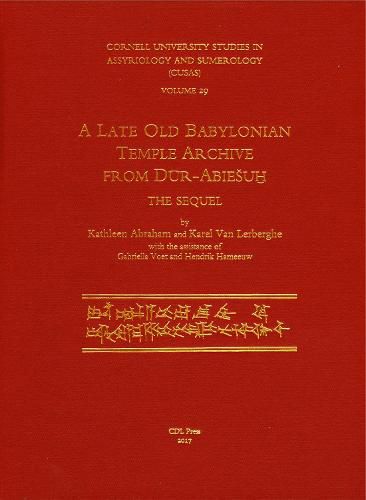Readings Newsletter
Become a Readings Member to make your shopping experience even easier.
Sign in or sign up for free!
You’re not far away from qualifying for FREE standard shipping within Australia
You’ve qualified for FREE standard shipping within Australia
The cart is loading…






CUSAS 29 (2017) contains a critical edition of 206 tablets from the Rosen Collection at Cornell University and come from the archive at Dur-Abieshuh on the Hammurabi-nuhush-nishi canal. The volume constitutes a continuation of the 89 texts published previously in CUSAS 8 (2009). The archive can now be dated to between the first years of the reign of Abieshuh and the final years of Samsuditana. While the material presented in CUSAS 8 revealed that Nippur, the sacred city of Enlil and the center of learning, was at least still partially inhabited in the late Old Babylonian period, this volume provides deeper insights into the social, economic, and military structures of the South at the end of this period and adds substantially to our knowledge of the history, geography, social and military institutions during the late Old Babylonian period, particularly in the region of middle and southern Babylonia.
$9.00 standard shipping within Australia
FREE standard shipping within Australia for orders over $100.00
Express & International shipping calculated at checkout
CUSAS 29 (2017) contains a critical edition of 206 tablets from the Rosen Collection at Cornell University and come from the archive at Dur-Abieshuh on the Hammurabi-nuhush-nishi canal. The volume constitutes a continuation of the 89 texts published previously in CUSAS 8 (2009). The archive can now be dated to between the first years of the reign of Abieshuh and the final years of Samsuditana. While the material presented in CUSAS 8 revealed that Nippur, the sacred city of Enlil and the center of learning, was at least still partially inhabited in the late Old Babylonian period, this volume provides deeper insights into the social, economic, and military structures of the South at the end of this period and adds substantially to our knowledge of the history, geography, social and military institutions during the late Old Babylonian period, particularly in the region of middle and southern Babylonia.